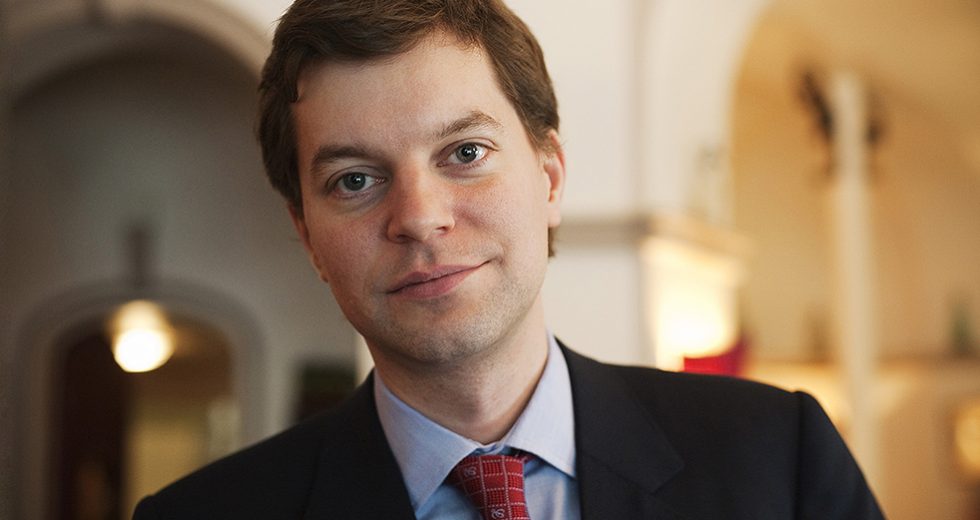
When Till Fellner returns to the Chicago Symphony Orchestra for concerts Jan. 25-27 and 30, he will be performing a Mozart piano concerto. That comes as little surprise, since the Austrian-born pianist favors the Austro-Germanic repertoire. Alongside Mozart, the other composers he admires most are Bach, Beethoven, Brahms, Liszt, Schubert and Schumann.
“It’s not that I don’t like Russian or French music,” Fellner said. “I play a little French music but not so much the Russian music. But it seems to me that Beethoven, Mozart, Schubert and Bach are so important, and it’s the most interesting music for me.”
Fellner, 45, who has in unassuming fashion built a world-class career beginning with his victory at the respected Clara Haskil Competition in Vevey, Switzerland, in 1993, is known for his probing, insightful interpretations. He prefers to delve deeply into the repertoire, and to do that, he has taken on a few large-scale performance projects. In 2008-10, for example, he presented the complete cycle of Beethoven’s 32 piano sonatas in 10 cities worldwide, including London, New York, Paris, Tokyo, Vienna and Washington, D.C., performing seven concerts at each locale.
Next season, he embarks on his latest such undertaking: a four-concert cycle of solo piano works by Franz Schubert from the last years of his life. Included will be not just sonatas but also the composer’s Impromptus, D. 899 and D. 935; Six moments musicaux, D. 780, and the Wanderer Fantasy, D. 760. Fellner will perform the complete set at concerts in Antwerp, Taipei and Tokyo, as well as at the famed Schubertiade, an annual festival in the Austrian towns of Hohenems and Schwarzenberg. In addition, he will play selected programs from the cycle elsewhere, including the Kitchener-Waterloo Chamber Music Society in Waterloo, Ontario, where the pianist appears regularly.
Keeping with Fellner’s emphasis on the mainstream Austro-Germanic repertoire, his upcoming album on the ECM label will feature live recordings of Liszt’s Années de pèlerinage (Years of Pilgrimage), and Beethoven’s Piano Sonata No. 32 in C Minor, Op. 111. The idea for the album came after Fellner played Années at the Musikverein, Vienna’s famed concert hall. He was taken with a recording of the performance by the Austrian national radio network. “I don’t know why and how, but it was a really good concert,” he said.
But to fill out an album, he needed something else, and he found a live recording of the Sonata No. 32, made when he performed the Beethoven cycle at Middlebury College in Vermont. He brought excerpts from the two recordings to Manfred Eicher, ECM’s legendary founder, who’s also a producer. “He liked it, and he agreed to bring it out on CD,” Fellner said.
For his CSO concerts, conducted by Manfred Honeck, Fellner will perform Mozart’s Piano Concerto No. 25, K. 503. The pianist considers the concerto, the last in a series of 12 such works that Mozart wrote in Vienna in 1784-86, to be one of the composer’s best. He describes the first movement as one of the “most symphonic” among the piano concertos, comparing it to Mozart’s writing in his famed Jupiter Symphony. “The second movement, by contrast, is more chamber-music-like,” he said. “There are no trumpets. No timpani. It’s a little bit more intimate.”
Although the piece was completed in December 1786, Mozart actually began the work a few years earlier, finishing portions of the orchestral and solo sections in the first movement. But he set aside what he had written. Scholars detected the interruption by studying the different manuscript paper the composer used at the two stages of the process. “Why did he stop?” Fellner said. “We don’t know.” He speculates that it might be an attempt to maintain a balance of musical keys across the works.
But in returning to the concerto, Mozart didn’t simply keep what he had written earlier, he also improved the solo section for the piano. “He extended it,” Fellner said. “It’s much longer, and it’s totally different. It’s much more individual. It’s more eventful. And the transition to the re-entry of the orchestra is much more convincing. You can see the changes [on the original manuscript] because it’s in a different color of ink. Mozart was a genius, without a doubt. But [these revisions] show that he invested much work in the compositional process. It’s not always the first solution that satisfied him.”
Photo: Jean Baptiste Millot